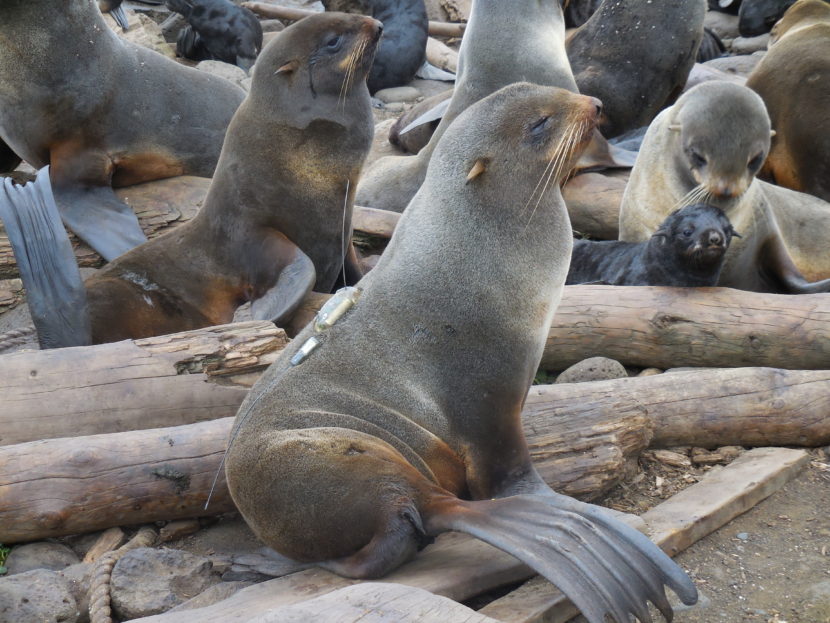
The northern fur seals on St. Paul Island are one of the most-studied marine mammals on the planet, but there’s still a lot scientists don’t know.
For the first time this year, scientists are using a device called a Saildrone to track down more information about the seals. The tool could help solve the mystery of why fur seals on the island have been declining since the 1970s.
Scientists have been tagging fur seals to monitor their foraging trips since the early 1970s. This year, they’ve added a new device: the Saildrone. Ecologist Carey Kuhn says the unmanned, wind- and solar-powered contraption can patrol the Bering Sea and measure the amount of available prey.
“We haven’t had the ability to take a boat out and do these types of large-scale prey surveys during the summer months when we want to know what’s going on,” said Kuhn. “The Saildrone has just been groundbreaking for us.”
Imagine the ocean has a bunch of different grocery stores. In the past, scientists could see which stores the seals were visiting, but they couldn’t see what was in them. Scientists can program the Saildrones to visit the feeding areas fur seals are known to frequent and log how much and what kind of fish are there.
The summer months are especially important, when fur seal moms try to fatten their pups up for the winter. Different seals have different strategies. This year, Kuhn saw one mother who hunted for six days, traveling more than 160 miles north of St. Paul.
“We know that when an animal spends a longer period of time at sea, the pup spends a longer period of time fasting on shore,” she said. “Then its growth rate isn’t as high as a female who could return quickly and feed her pup more often.”
At the end of the month, Kuhn will return to St. Paul to retrieve the seal tags and weigh and measure the pups.
When all the data is in, the team will be able to see where the seals are getting their food and how much there was. Kuhn says those answers are made possible by Saildrones.
“We really think this is going to change the way that we do science because we’ll be able to do things that we haven’t had the ability to do in the past,” she said.
Kuhn says this is the first step of a larger project. Understanding how northern fur seals respond to changes in the distribution and abundance of fish could explain the mysterious decline of fur seals in the Pribilof Islands.
